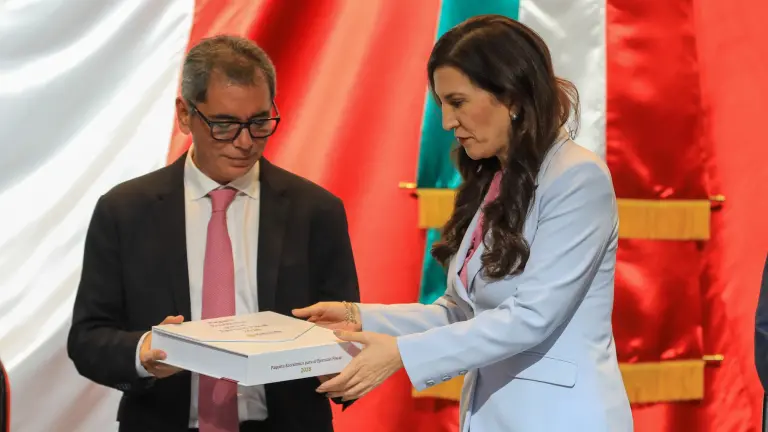Inflation Data in Mexico and the United States
The behavior of inflation, both in Mexico and the United States, were among the most relevant economic data that marked the second week of September.
The Consumer Price Index (CPI) in the United States is crucial for the Federal Reserve (Fed), which is preparing for its policy meeting next week (September 16-17).
Mexico’s First Fully Drafted Economic Package by Sheinbaum’s Administration
On Monday, September 8, the Secretariat of Finance and Public Credit (SHCP) delivered the first economic package fully drafted by President Claudia Sheinbaum’s administration and her second term.

The Secretary of Finance, Edgar Amador, handed over the 2026 Economic Package to the Chamber of Deputies’ Leadership.
In its General Criteria for Economic Policy, it is projected that the economy will grow between 1.8% and 2.8% next year.
The Federal Income Law Initiative (ILIF) 2026 anticipates federal government revenues of 8.72 trillion pesos, with tax revenues as the backbone.
Additionally, it proposes a reform to the Customs Law and the General Import Tax to impose tariffs between 10% and 50% for countries with which Mexico does not have trade agreements.
Following the receipt of the 2026 Economic Package, the Federal Union Congress began reviewing the documents that make it up. Legislators also called on the heads of the secretariats to appear before the Plenary of the Lower Chamber to present their budgetary allocations.
The Income Law draft must be approved in the Chamber of Deputies before October 20, while the Federal Government’s Expenditure Budget must be approved before November 15.
Advancement of Trump’s Nominee for the Fed Board
Donald Trump’s economic advisor, Stephen Miran, cleared a significant hurdle this Wednesday to become one of the Fed governors after winning a vote in a U.S. Senate committee.

Stephen Miran leads the CEA of the White House. Photo:
The U.S. Senate committee voted 13 to 11 in favor of his nomination, facing frontal opposition from the Democrats.
President Trump has been urging the Fed to lower its interest rates for months. In response, Trump nominated Miran to occupy a vacant position until January 31, 2026 on the Fed.
Miran heads the Consejo de Asesores Económicos (CEA) of the White House.
Key Questions and Answers
- What is the significance of inflation data in Mexico and the U.S.? These figures are crucial as they help central banks, like the Federal Reserve in the U.S., make informed decisions about interest rates and monetary policy.
- Who is Claudia Sheinbaum, and why is her economic package important? Claudia Sheinbaum is the President of Mexico City. Her administration’s fully drafted economic package signifies a new direction for the country’s fiscal policies.
- What are the key points of Mexico’s Income Law Initiative (ILIF) 2026? The ILIF 2026 anticipates federal government revenues of 8.72 trillion pesos, with tax revenues as the backbone. It also proposes tariff adjustments for countries without trade agreements with Mexico.
- Who is Stephen Miran, and why is his nomination to the Fed Board significant? Stephen Miran is an economic advisor to former U.S. President Donald Trump. His nomination, if approved, would place him on the Federal Reserve Board, potentially influencing U.S. monetary policy.






